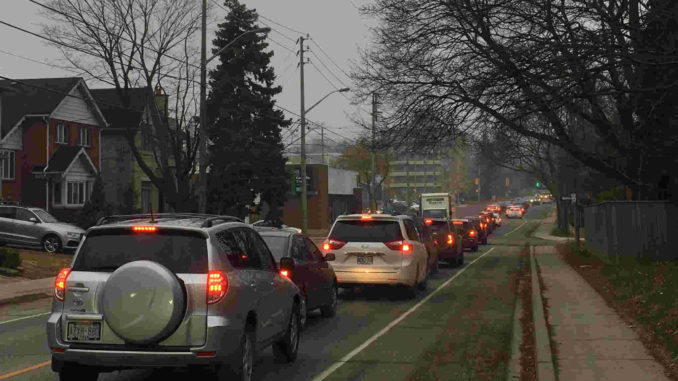
While traffic volumes have dropped significantly during the pandemic, congestion is a major issue on many of Toronto’s main arteries – including Bayview Avenue, Eglinton Avenue, and many other streets in Leaside. It’s been estimated that congestion costs our city nearly $11 billion annually in lost productivity. The resulting delays also contribute to driver frustration, which can have significant road safety impacts. Congestion on major arterial roads can also lead to increased traffic infiltration in our local neighbourhoods – an issue we see all too frequently in Leaside. For these reasons, congestion management has remained one of my top priorities at City Hall.
Unfortunately, the increasing demand placed on our roads by the movement of freight and goods has exacerbated existing congestion issues in Toronto. In 2018, the freight and goods movement industry accounted for approximately 30% of Toronto’s GDP and employed some 630,000 residents. The COVID-19 pandemic has caused a sharp uptick in online shopping and specialized delivery services, with Canadian e-commerce sales nearly doubling from February to May, 2020. These changing trends have led to more freight and delivery vehicles using our streets.
In late 2020, City Council approved a new Freight and Goods Movement Strategy (FGMS) to better coordinate the number of delivery vehicles on our streets and minimize their impact on traffic congestion. The strategy – which builds on the Congestion Management Plan I introduced as the former Chair of Public Works and wrote about in the February, 2020 edition of Leaside Life – includes 24 strategic actions to manage the transportation of freight and goods throughout the City, such as:
• Promoting Off-Peak Delivery (OPD) as a standard practice
• Encouraging adoption of technologies to minimize noise and air pollution resulting from freight and delivery operations, and
• Establishing a Strategic Truck Network (STN) to identify key corridors/alternative routes.
In 2019, the Region of Peel ran an Off-Peak Delivery Pilot, which resulted in a shift of 30% of deliveries to off-peak hours, taking 30% of trucks off the road during peak travel times and reducing travel times by 18%. Additionally, the results showed significant decreases in GHG emissions (11%) and harmful air pollutants (11-18%) resulting from the offset traffic.
This big-picture policy framework will complement the local Traffic Management Plan currently under development in Leaside. In tandem with the other congestion management efforts underway in our City, the Freight and Goods Movement Strategy will contribute to a more coordinated, efficient, and effective transportation network, and help address the impacts of congestion in local neighbourhoods across Toronto.


